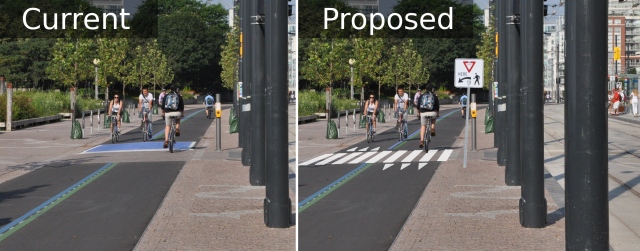reaperexpress
Senior Member
These suggestions unfortunately will be ignored by the people in charge because they did not think about it. They did not think about it because they are very addicted to the automobile, and consider bicyclists and pedestrians second-class "things" and have to be tolerated.
While there has indeed been a history of car-centric planning, it is ignorant and frankly counterproductive to blindly assign this mentality to everyone involved in designing something you don't like.
The new Queen's Quay was designed by West 8 Architects, of Rotterdam, the Netherlands - a city where the bicycle is very much a transport mode on par with the automobile. The conceptual design clearly places a higher focus on pedestrians and cyclists than on cars. It removed half the car lanes to replace them with a generous sidewalk, a bicycle path with fully-protected traffic signals and widened streetcar platforms. Meanwhile, the car lanes are the absolute minimum permitted width, and turning movements are heavily restricted.
The issues we experience on Queen's Quay with conflicts between pedestrians and cyclists are entirely due to poorly designed details within the larger well-designed plan. Namely we're talking about paving materials, pavement markings and signage. It seems as though the bicycle path was designed by a landscape architect rather than a traffic engineer, which is why the design sends mixed signals to various users - hence the mixed and conflicting behaviours.
Full blog post on how to fix it:
https://ontariotrafficman.wordpress...e-track-reconciling-cyclists-and-pedestrians/
A couple pictures from my above article:





